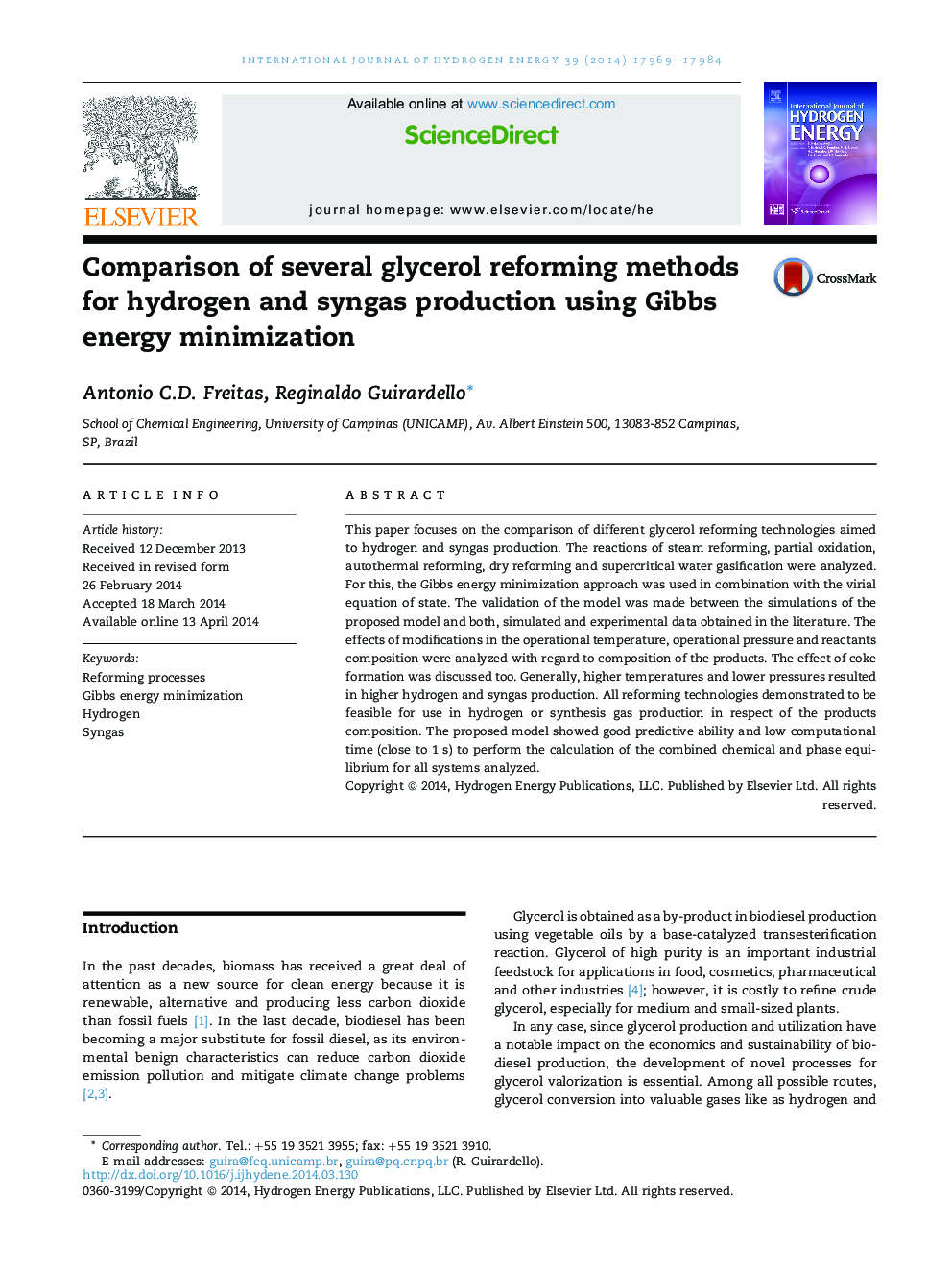| Article ID | Journal | Published Year | Pages | File Type |
|---|---|---|---|---|
| 1271894 | International Journal of Hydrogen Energy | 2014 | 16 Pages |
•We performed the thermodynamic evaluation of different glycerol reforming technologies.•Gibbs energy minimization approach was used in combination with the virial equation of state.•The proposed model showed good predictive ability and low computational time.
This paper focuses on the comparison of different glycerol reforming technologies aimed to hydrogen and syngas production. The reactions of steam reforming, partial oxidation, autothermal reforming, dry reforming and supercritical water gasification were analyzed. For this, the Gibbs energy minimization approach was used in combination with the virial equation of state. The validation of the model was made between the simulations of the proposed model and both, simulated and experimental data obtained in the literature. The effects of modifications in the operational temperature, operational pressure and reactants composition were analyzed with regard to composition of the products. The effect of coke formation was discussed too. Generally, higher temperatures and lower pressures resulted in higher hydrogen and syngas production. All reforming technologies demonstrated to be feasible for use in hydrogen or synthesis gas production in respect of the products composition. The proposed model showed good predictive ability and low computational time (close to 1 s) to perform the calculation of the combined chemical and phase equilibrium for all systems analyzed.
